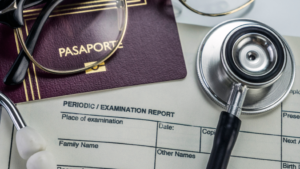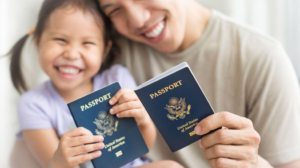The family-based third preference immigrant visa category (“F3”) is a type of visa available to U.S. citizens who are looking to bring their married children to the United States. This immigrant visa category is in high demand and there are yearly quotas for visas. As a result, the waiting period before a visa becomes available is exceptionally long. Understanding the waiting period for an F3 visa and how it is shown on the U.S. Department of State (“DOS”) Visa Bulletin is important for those who are looking to bring their married children to the United States.
The DOS visa bulletin is a monthly publication which provides information on the availability of immigrant visas in each category, including the F3 category. The visa bulletin shows the priority date for each category, which for the F3, is the date when the U.S. citizen filed the I-130 Petition for Alien Relative with the United States Citizenship and Immigration Services for their relative. The priority date is important because immigrant visas are issued to those with the earliest priority date.
The estimated wait time for an F3 visa to become available can vary greatly depending on the demand for immigrant visas in that category and the number of immigrant visas that are available.
It is important to note that the estimated wait time is merely an estimate. It can change from month to month and is not a guarantee that an immigrant visa will become available within a certain timeframe. The DOS Visa Bulletin provides updated information on the availability of visas in each category, so it is a good idea to check the Visa Bulletin regularly if you are waiting for an F3 visa to become available.

In the above Visa Bulletin, based on the priority date under All Chargeability Areas on Table A Final Action Date in the Visa Bulletin of March 2023, the F3 category shows a priority date of November 22, 2008. If a U.S. citizen files an I-130 Petition for a married child today it could take approximately 16 years for a visa to become available. The wait time will be considerably longer for nationals of Mexico and the Philippines.
It is very important to understand that these priority dates may not move forward for many months; they might move forward only 1 week a month; they might jump forward by weeks or even months, or they might even move backward (retrogress), depending on demand. Therefore, the priority date is only useful for a general idea of how long an applicant might wait for a visa to become available.
This estimate is based on the current demand for immigrant visas in this category and the availability of such immigrant visas in the U.S. immigration system. It is important to keep in mind that the wait time can vary depending on several factors, including the number of visas that are made available each year, and the number of individuals who are waiting in line. The priority date does not move forward on a regular schedule.
If you have questions about U.S. visas, contact us at info@enterlinepartners.com and speak with a U.S. immigration attorney in Ho Chi Minh City, Manila and Taipei.
ENTERLINE & PARTNERS CONSULTING
Ho Chi Minh City, Vietnam Office
Suite 601, 6th Floor, Saigon Tower
29 Le Duan Street
Ben Nghe Ward, District 1
Ho Chi Minh City, Vietnam
Tel: +84 933 301 488
Email: info@enterlinepartners.com
Facebook: Enterline & Partners – Dịch vụ Thị thực và Định cư Hoa Kỳ
YouTube: @EnterlineAndPartnersConsulting
Website: http://enterlinepartners.com
Manila, Philippines Office
Tel: +63 917 543 7926
Email: info@enterlinepartners.com
Facebook: Enterline and Partners Philippines
Website: https://enterlinepartners.com/language/en/welcome/
Copyright 2023. This article is for information purposes only and does not constitute legal advice. This article may be changed with or without notice. The opinions expressed in this article are those of Enterline and Partners only.








